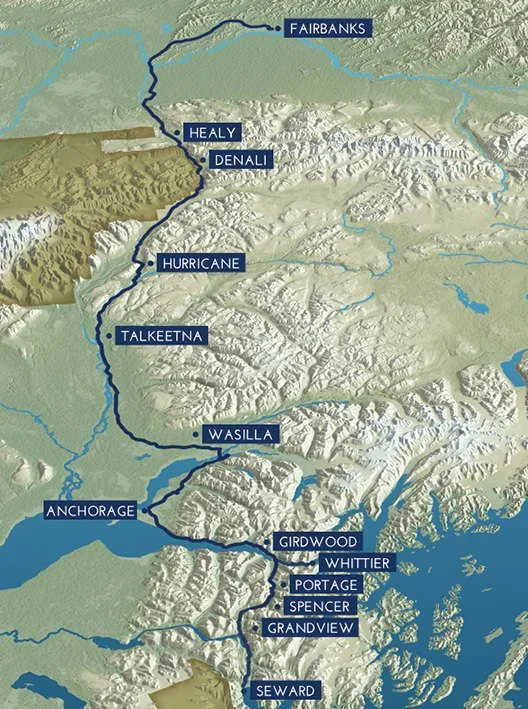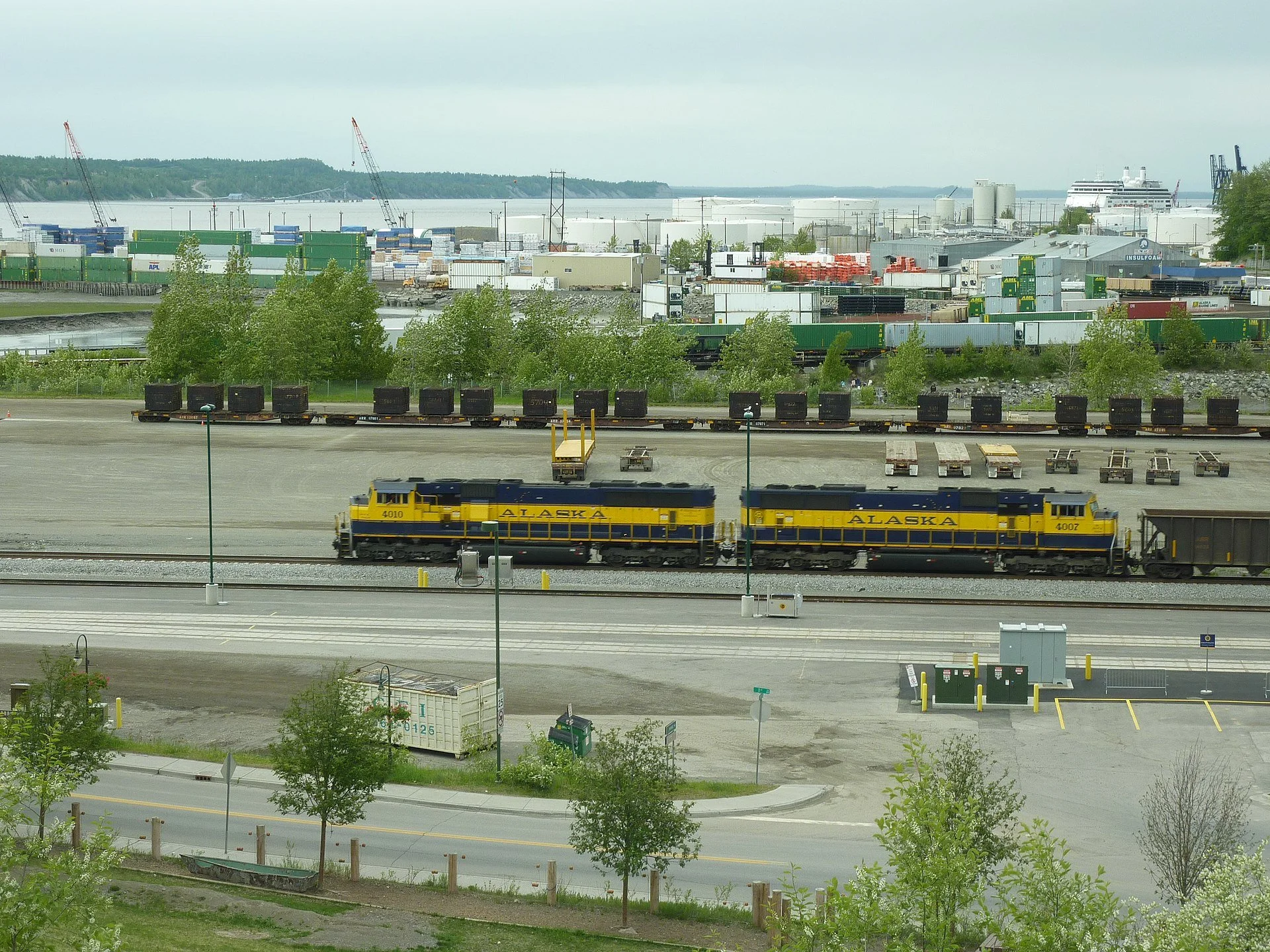Alaska’s Railroad
Despite being so far North, Alaska’s state railroad offers a surprising amount of rail across the state. This ain’t just freight rail either. The Alaska Railroad’s main passenger line runs 470 miles (756km) from Seward, AK to Fairbanks. Connecting the smaller settlements of the interior to the state’s largest center of the population in Anchorage. In 1923, after nine years of construction, this main line was fully connected. Additionally, Alaska’s Rail-Marine Service bring the state’s railroad to Alaska’s western coast; connecting to maritime ports and the Yukon River. Unfortunately, these spur routes are only available to freight rail.
Serving the populated southern portion of the state; the Alaska Railroad offers daily passenger service to the region during the summer (May 15-September 15). In turn, passenger service is reduced to one round-trip per week between Anchorage and Fairbanks during the winter season. However, no matter the time of year; Alaska’s most-populous city, Anchorage, is at the center of the state’s passenger rail. Providing regularly scheduled services and scenic excursions along an expanse greater than the distance between Boston and Washington DC.
Alaska’s regularly scheduled services include;
Coastal Classic Train
(Anchorage > Girdwood > Seward)
Denali Star Train
(Anchorage > Denali National Park > Fairbanks)
Glacier Discovery Train
(Anchorage > Whittier > Grandview)
Hurricane Turn Train - Summer Service
(Hurricane > Talkeetna)
Hurricane Turn Train - Winter Service
(Hurricane > Talkeetna > Wasilla > Anchorage)
Aurora Winter Train
(Anchorage > Wasilla > Talkeetna > Healy > Fairbanks)
Overall, system ridership FY 2023 was 226,000, which accounts for less than half of the pre-COVID ridership of 522,101 FY 2019. Despite this, the Alaska is a self-sustaining system. Receiving no funds from the state, but rather pulling a common sense method of generating revenue through freight, passenger, and real estate services to cover expenses. Employing a strategy of efficiency and innovation by infusing green energy tech with commerce. Leading to the railroad earning Green Star Award Certification by reducing energy and water consumption, along with the services air quality recertification for its efforts to curb emissions. Finally, the latest buzz about the regional is the implementation of a commuter and light rail system. This would use existing Alaska Railroad tracking to provide service to Whittier through to the Eagle River region. Alas, those are the talks.
Works Cited //
https://www.alaskarailroad.com/ride-a-train/route-map
https://www.alaskarailroad.com/sites/default/files/akrr_pdfs/Fact_Sheet.pdf
https://www.apta.com/wp-content/uploads/2023-Q4-Ridership-APTA.pdf
https://www.alaskarailroad.com/sites/default/files/akrr_pdfs/Fact_Sheet.pdf





